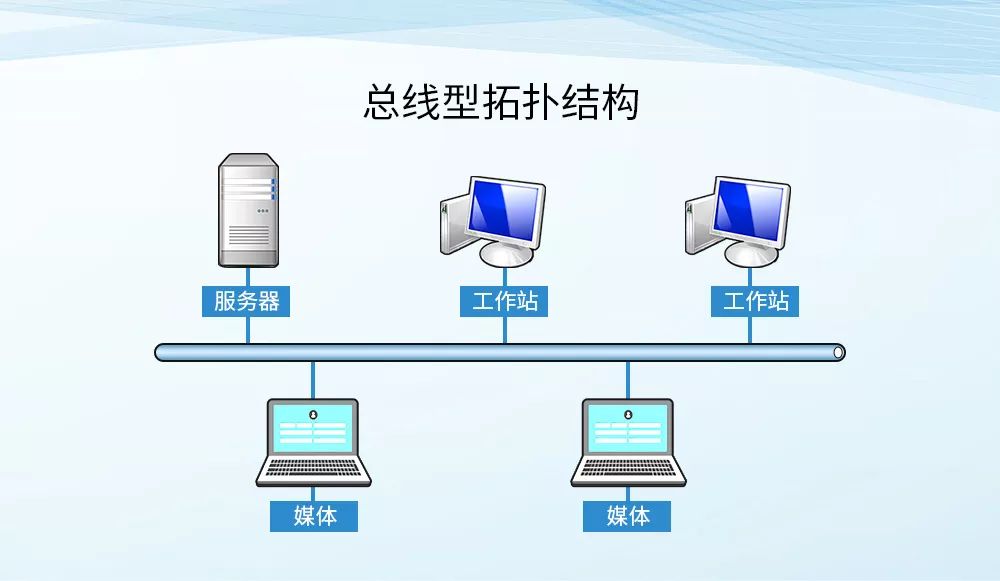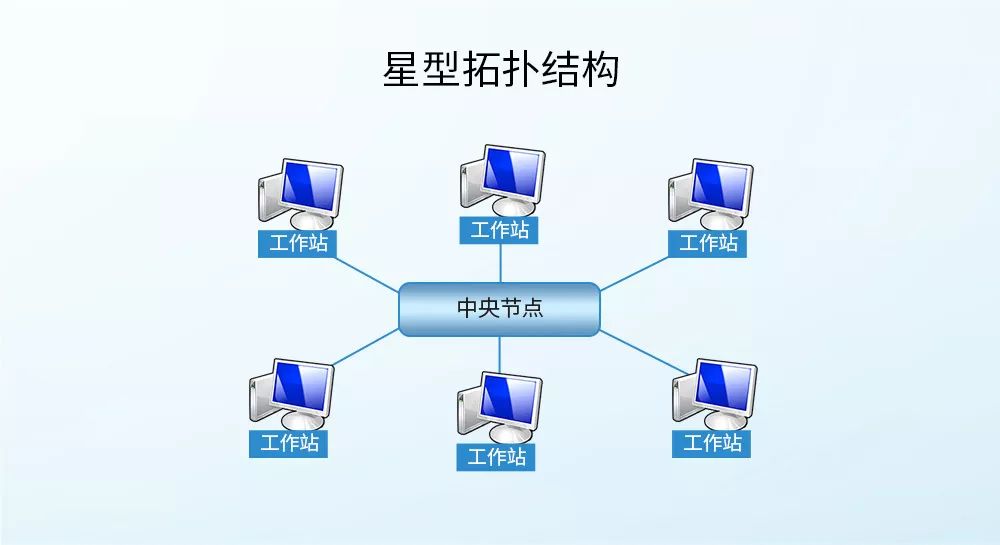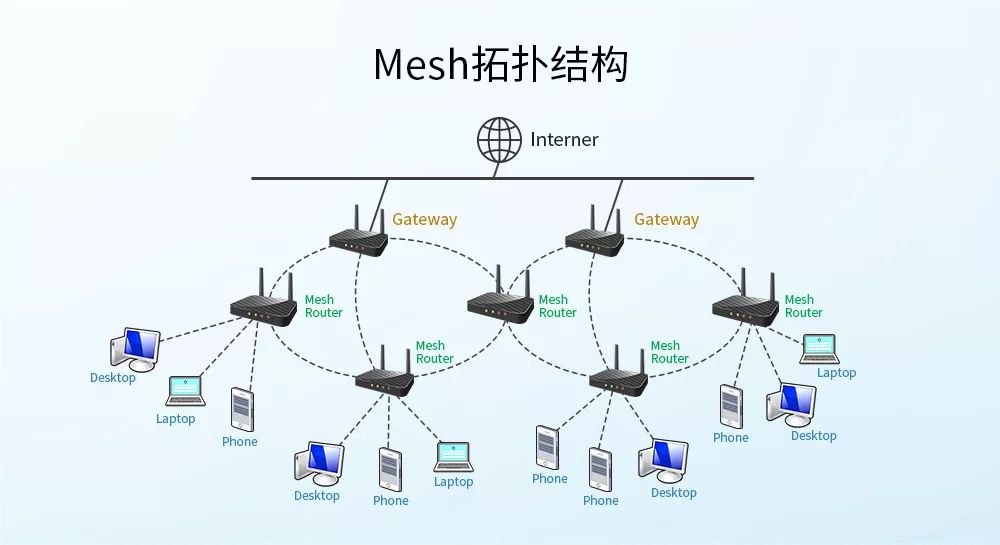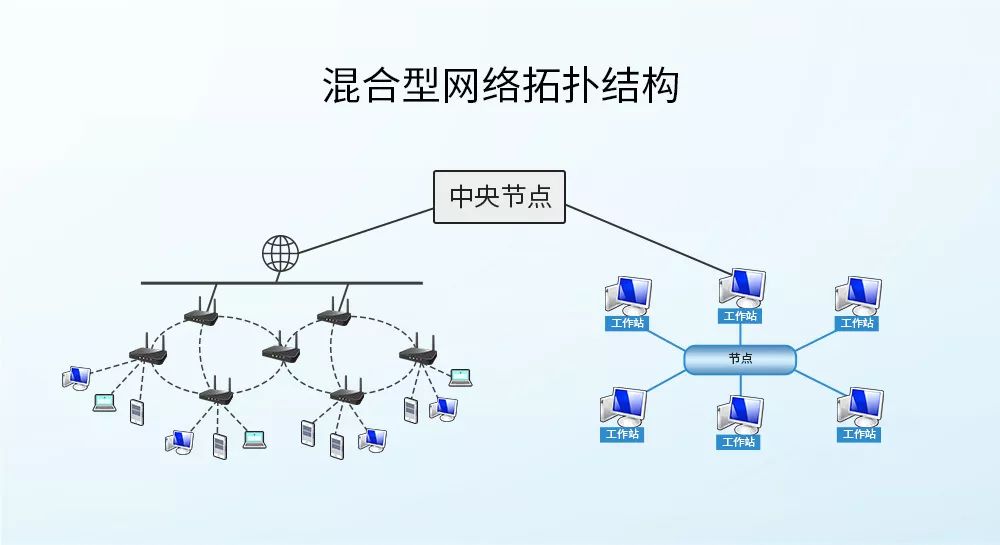
Topology is a word derived from geometry and originally refers to the study of some properties of geometric figures or Spaces that remain the same after continuous shape changes. It takes into account only the position of objects without regard to their shape or size. The familiar network topology describes how different nodes in a network connect and communicate with each other.

Modern networks consist of many different types of devices, such as routers, smartphones, bluetooth headsets, and smart light bulbs.
Choosing the right network layout is crucial to the efficient operation of the system. For wireless networks, this is highly relevant as it relates to factors such as latency, power, speed, and redundancy.
Simple network topology
At present, there are many different network topologies in the industry, and each topology has different advantages and disadvantages.
The simplest network is a point - to - point one that establishes a single network connection between two nodes. In fact, with the exception of some key or special applications, there are very few applications that use this kind of one - to - one connection. A modern example is ad - hoc connectivity via bluetooth for apple's Airdrop file - sharing service or remote control of objects like model airplanes.
The easiest way to add more nodes to a network is to use Daisy links, which come in two forms: linear and circular. A linear Daisy chain is one that connects a third node to an existing node, a fourth node to a third node, and so on. This method is convenient for the addition of nodes in the network, but as more nodes are added, delay and low fault tolerance will pose great challenges to the stability and reliability of the network. In a ring network, a third node is connected to two existing nodes at the same time, and each other node is added between the two existing nodes to create a loop. Each node is connected to exactly two other nodes. Data travels around the ring in one or both directions, with each node checking the data and manipulating it, or retransmitting it until it reaches its destination. Daisy chains can be used to create networks for connected devices, such as smart light bulbs, but for most use cases, there are other, better solutions.
Solutions for scaling

▶ once we added a large number of nodes to the web, point to point and Daisy chain become inefficient. If two nodes on either side of a 1,000 node ring want to communicate, their data must first pass through 500 other nodes. Daisy chains are also prone to errors, because a single failed node can cause a large number of interrupts, or even, in the worst case, a message cannot pass at all.
▶ in bus topology, we will all of the devices connected to the central backbone (called the bus), this is similar to the linear topology, but with multiple single branch of a single line. This is a common topology in wired network. Rs232/485 and CAN communication belong to this type, but there is no real similar topology in the wireless world.
▶ although I know these topology is very important, but in the modern wireless ecosystem, these topologies are not common. Now, we're going to look at common architectures in wireless networks.
The star topology of a wireless network

▶ is most useful to a wireless network topology is a star topology, each node is connected to a central hub, the hub will reach the location of the data distribution to any need. The most obvious example is a home network, where all nodes (phones, printers, tablets, etc.) are connected to a wireless access point (hub), which is usually both a router for the local network and a bridge to the Internet. Star networks are perfect for seamlessly connecting wired and wireless nodes at the same time. This is an easy way to implement a wireless network, but it presents two major challenges. A hub that is temporarily at the center of a system is a single point of failure. If the hub fails, the entire network no longer exists, rendering the device unable to communicate at all. In addition, devices in the star topology must be located within a certain distance of the hub.
▶ to increase the elasticity, as well as the communication range, we need to be more clever ideas.
Mesh network

There are two types of ▶ Mesh network, and part of the complete. In a complete Mesh network, each node is directly connected to each other, which is very helpful for elasticity, but cannot increase the communication range. Such networks are only available in applications such as military networks that must be 100 percent redundant. On the other hand, each node of the partial Mesh network is connected to one or more other nodes, which increases the elasticity because there is no single point of transmission failure. At the same time, it also expands the effective communication range, because node A may not be in the direct communication range with node C, but messages can be transmitted through node B.
▶ Mesh network is the largest in the Internet of things development field, theoretically allowing unlimited equipment across infinite distance to connect. Using Mesh networks, resilient smart homes, smart businesses and smart cities become a reality.
Hybrid network

▶ now, using a single network topology of the sample in fact less and less. Most networks are a mixture of one or more different topologies.
▶ tree network is in a bus network, general multiple star network together. This approach is often used when there are multiple clusters of nodes, such as in a WAN network. In this case, each node is connected to a router to form a star network, and then the routers are connected together to create a bus connection between them. This can also be done through the Snowflake network, which connects multiple Star networks to a single central node, like the Star of Stars.
▶ the Internet is the ultimate hybrid network, it includes many of each type of individual network, among them, the bus, star, ring and Mesh networks are combined together.
standardized
The key to speeding up Mesh network deployment is standardization. As the participating manufacturers in the Mesh field are eager to profit from the industry's demand for Mesh networks, many have defined their own Mesh networking standards. Although we may see an implementation standard in the market, many different standards will coexist in this market segment.
Current smart homes may have Mesh network bulbs from one supplier and heating control Mesh networks from another, both connected to regular star networks that allow users to control them with their smartphones. Obviously, this scheme is inefficient and will not benefit everyone in the long run.
The industry's main goal is to create a standard Mesh network where all the nodes, be they smartphones, laptops, light bulbs or sensors, can be added. There is still some way to go before that happens, but if it does, the Internet of things will be able to reach its true potential.